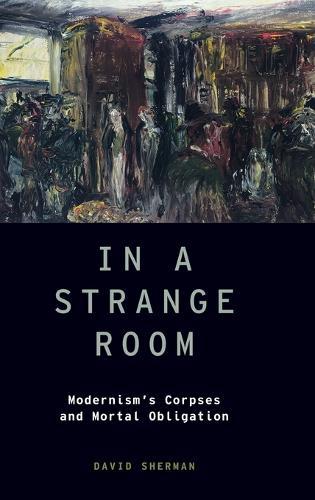Overview
Literary modernism emerged as death, stripped in the developing world of traditional meanings and practices, became strange. The sea-change over the first part of the twentieth century in how people died and tended corpses-the modernization of death-was a crucial context in which modernist writers developed their new novelistic and poetic techniques. They sought ways to renovate mortal obligations in an age of the obsolescence of the dead.For many years, the flesh-and-blood body has been a central protagonist in literary scholarship--the body in pain, the body as spectacle and performance, embodiments of social identity--but the body in its mortality, as corpse, has not received sustained critical attention. Filling this gap, In a Strange Room investigates modernism's preoccupation with corpses, death rituals, and the ethical demands the dead make on the living who survive them.Informed by insights from psychology, anthropology, political theory, and philosophy, David Sherman shows how modernist aesthetics sought to re-animate the complex meanings and values of dead bodies during an era of their efficient, medical administration and hygienic disposal. The modernist imagination reckoned with the processes by which the modern corpse became a secularized object increasingly subject to scientific inquiry, governmental regulation, specialized medical technologies, and new forms of market exchange. Chapters explore representations of state power over the war dead in Virginia Woolf and Wilfred Owen, the narrative problem of the unburied corpse in As I Lay Dying and Ulysses, mortal obligation as erotic desire in Eliot's The Waste Land and Djuna Barnes's Nightwood, and mortuary pedagogies embedded in elegies by Wallace Stevens and William Carlos Williams.Gathering examples from fiction, poetry, and the visual arts, In a Strange Room considers the changing relationship between aesthetics and mortality during the first half of the twentieth century. New attitudes toward dying and dead bodies demanded modernism's strange, bracing ways of representing ethics at the limits of life.
Full Product Details
Author: David Sherman (Assistant Professor, Assistant Professor, Brandeis University)
Publisher: Oxford University Press Inc
Imprint: Oxford University Press Inc
Volume: 21
Dimensions:
Width: 23.60cm
, Height: 3.10cm
, Length: 16.30cm
Weight: 0.499kg
ISBN: 9780199333882
ISBN 10: 0199333882
Pages: 288
Publication Date: 15 May 2014
Audience:
General/trade
,
General
Format: Hardback
Publisher's Status: Active
Availability: Manufactured on demand

We will order this item for you from a manufactured on demand supplier.
Reviews
David Sherman's prescient book brings together both the corpse's organic materiality and its narrative entombment in modernist literature by re-examining the enigmatic concept of modern death-a terrific read. -John Troyer, author of Technologies of the Human Corpse Perhaps foremost among Sherman's many important contributions to studies of modernism and studies on death is his ability to show that literature and the arts, because of their aesthetic and non-theoretical aspects, are natural places for thinking through the materiality of the dead. He demonstrates not simply how crucial that thinking is to modernism, but also how important it is for its broader ethical, political, and erotic implications. -Jonathan Strauss, author of Human Remains: Medicine, Death, and Desire in Nineteenth-Century Paris Perhaps foremost among Sherman's many important contributions to studies of modernism and studies on death is his ability to show that literature and the arts, because of their aesthetic and non-theoretical aspects, are natural places for thinking through the materiality of the dead. He demonstrates not simply how crucial that thinking is to modernism, but also how important it is for its broader ethical, political, and erotic implications. -Jonathan Strauss, author of Human Remains: Medicine, Death, and Desire in Nineteenth-Century Paris
...[A] fine work of literary criticism... [T]his is an impressive work of scholarship that makes strange the dearth of critical attention previously granted its topic. --Mortality In A Strange Room's articulation of modernism's sustained and fraught attempts at communion with its corpses provides a powerful exploration of the search for the ethics of death in a secularized landscape, that struggled to accommodate the bodies that were barely contained at its borders. --Review of English Studies David Sherman's prescient book brings together both the corpse's organic materiality and its narrative entombment in modernist literature by re-examining the enigmatic concept of modern death-a terrific read. --John Troyer, author of Technologies of the Human Corpse Perhaps foremost among Sherman's many important contributions to studies of modernism and studies on death is his ability to show that literature and the arts, because of their aesthetic and non-theoretical aspects, are natural places for thinking through the materiality of the dead. He demonstrates not simply how crucial that thinking is to modernism, but also how important it is for its broader ethical, political, and erotic implications. --Jonathan Strauss, author of Human Remains: Medicine, Death, and Desire in Nineteenth-Century Paris
an engaging study of the ways in which society's shifting relationship with death influenced the work of a wide range of writers. J. W. Moffett, Choice
Author Information
David Sherman is Assistant Professor of English at Brandeis University.




